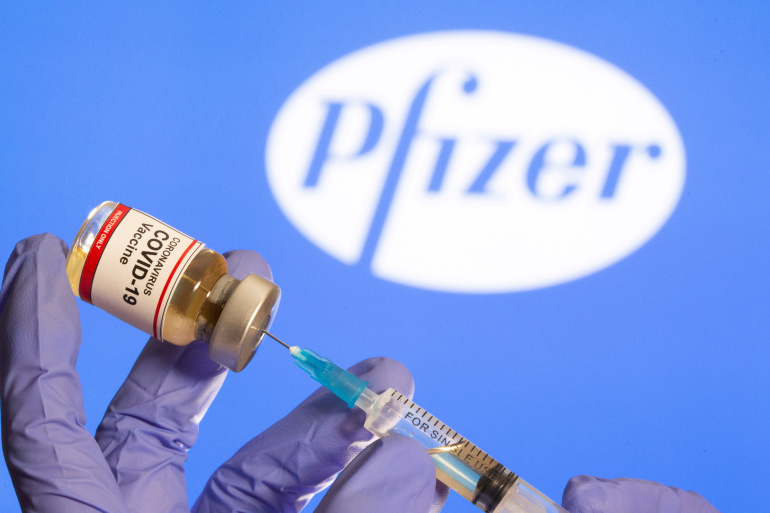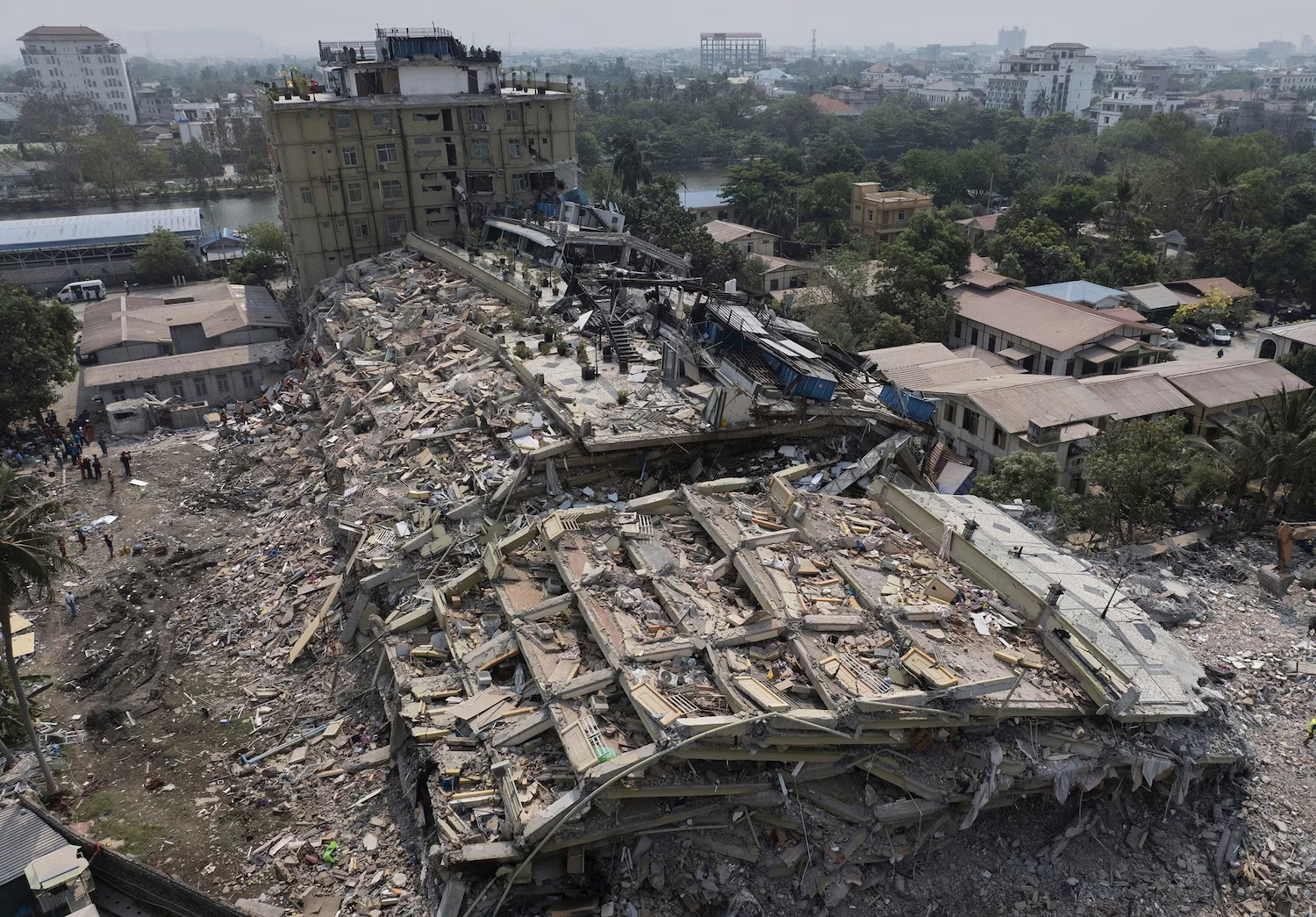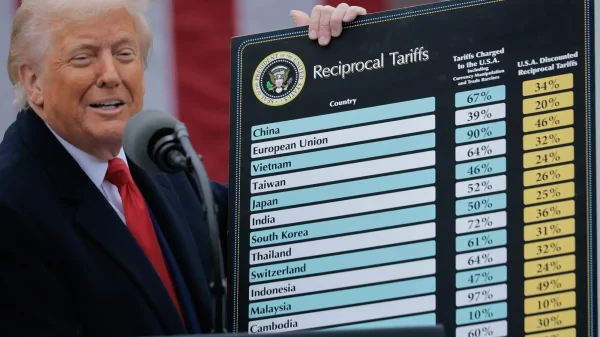An analysis of COVID-19 vaccinations in America
Photo credit REUTERS
The approved and endorsed Pfizer COVID-19 Vaccine. REUTERS/Dado Ruvic/File Photo
With coronavirus cases rising exponentially in the United States and across the globe, the pandemic continues to disrupt lives, wreck economies, and devastate families. However, hope is on the horizon as Pfizer-BioNTech and Moderna, multinational pharmaceutical companies, began rolling out tens of millions of COVID vaccine doses in America, starting in early January (Fortune).
The importance of developing vaccines to combat the coronavirus became clear early on in the pandemic when COVID-related deaths surged in countries all over the world, overwhelming healthcare workers and contributing to a global shortage of standard medical supplies such as personal protective equipment (PPE), ventilators, and masks. As a result, multiple biopharmaceutical companies stepped up to the daunting task of creating a vaccine that would, essentially, save the world from the microbe that has caused such loss and sorrow in less than a year.
Two companies successful in creating a vaccine that prevents patients from contracting COVID-19 are the American-German team of Pfizer and BioNTech and American-based Moderna. The vaccines produced by these companies, though serving the same purpose, differ in the aspects of the technology used, methods of mass production, and transportation requirements.
Pfizer and BioNTech were among the first organizations to test the efficacy of their coronavirus vaccines through clinical trials. There are three main phases of clinical trials in the United States. The first phase is to administer low doses of the treatment and monitor any side effects; the second phase includes a larger group of human participants than the first phase and further assesses the side effects and overall efficacy of the treatment; the third phase compares the potency of the proposed treatment to either a placebo or a standard-of-care drug and includes a much larger group of patients, who are often randomly selected.
Pfizer and BioNTech began Phase 3 clinical trials on July 27, 2020. Of the nearly 44,000 trial participants, half were administered the actual vaccine, while the other half received a placebo of saltwater. After participants had received both doses of the vaccine (given 21 days apart), Pfizer and BioNTech analyzed the results and concluded that their COVID-19 vaccine was 95 percent effective. The U.S. Food and Drug Administration (FDA) granted emergency use authorization, a method to expedite the availability of medical supplies and treatments, to the Pfizer-BioNTech vaccine on Dec. 11, 2020.
Due to these outstanding results, Pfizer and BioNTech have received orders from the federal government to deliver 200 million vaccine doses by July 31, 2021. This will enable 100 million Americans to be vaccinated by the middle of this year. Transporting the vaccines is difficult, however, as the doses need to be stored at -70°C±10°C (-94°F±18°F) at all times. Nevertheless, Pfizer and BioNTech are determined to cross this last hurdle and are investing in refrigerated vehicles with real-time GPS tracking to ensure optimal temperatures while transporting the doses.
Moderna went through a similar process to test the efficacy of their coronavirus vaccine. Their Phase 3 trial consisted of 30,000 volunteers from various demographics: 63 percent were white, 20 percent were Hispanic, 10 percent were Black, and 4 percent were Asian American. The trial was blind, meaning that neither the participants nor the people administering the vaccines knew if they were handling a placebo or an actual dose. The results of the clinical trial concluded that the Moderna vaccine had 94.5 percent efficacy, nearly the same as the Pfizer-BioNTech vaccine. On Dec. 18, 2020, just a week after approving the Pfizer-BioNTech vaccine, the FDA issued the Moderna vaccine emergency use authorization as well.
The U.S. government has been backing Moderna’s vaccine since the very beginning when the program overseeing the successful production and delivery of vaccines, Operation Warp Speed, invested $1 billion to fund initial research and clinical trials. Once the vaccine proved effective, the government paid an additional $1.5 billion to Moderna for 100 million doses. In contrast to the Pfizer-BioNTech vaccine, doses of the Moderna vaccine are easier to transport, as they can be stored at between 2-8°C (36-46°F), temperatures of average household refrigerators.
Although both the Pfizer-BioNTech and Moderna vaccines have been approved by the federal government, there are still numerous obstacles that prevent the United States from becoming a COVID-free nation again. Results from a survey of 2,000 Americans by IPSOS, a market research company, concluded that 36 percent of Americans somewhat or strongly disagree with receiving a COVID vaccine once it becomes available. Of that 36 percent (720 people), 24 percent mention that their skepticism stems from concerns about possible symptoms and side effects. Despite numerous research studies and clinical trials confirming that the vast majority of individuals will only have minor symptoms, vaccine hesitancy due to this very reason seems to be growing in America.
“I do recommend that others receive the vaccine,” says Dr. Renee A. Alli, a pediatric practice director at Children’s Healthcare of Atlanta and Westminster parent. “Vaccinated individuals will be protected from severe disease if infected, and there are studies pointing toward decreased asymptomatic carriage of COVID in vaccinated individuals. This translates to decreased asymptomatic spread [in the overall population].”
Alli, who has already received the first dose of the Moderna vaccine, mentioned that she only had mild side effects that were “limited to a mild headache and a sore deltoid [shoulder] area.”
For the past month, vaccine rollout in the United States has been characterized by its slow pace and overall disorganization. Alli says that she found the process to secure a vaccine “straightforward,” but that many of her colleagues in private practice, smaller organizations, and non-clinical roles experienced challenges securing the second dose of the vaccines. This problem has been encountered by doctors all over the country.
“I think we always have room to grow when there are challenges,” said Courtney Cox, an Upper School biology teacher. “We needed to have a better plan in place, but I think this is a great learning opportunity for the future.”
The Biden Administration has promised to administer 100 million vaccine doses in 100 days, a crucial step in revitalizing the American people and economy. The administration has outlined its comprehensive plan for the national distribution of vaccines, emphasizing that they will work to create more venues for vaccinations and focus on administering vaccines to “hard-to-reach and high-risk populations.” The strategy also proposes a solution to the problematic policy of holding back vaccine doses; instead, the administration will “[hold] back a small reserve and [monitor] supply to ensure that everyone receives the full regimen as recommended by the FDA.”
Since vaccine distribution and administration will inevitably take time, the Georgia Department of Health has curated three categories in order to strengthen organizational tactics for this process. The Phase 1a group, who are the current priority for receiving the vaccine, includes healthcare workers, residents of long-term care facilities, adults above the age of 65, caregivers for the elderly, and law enforcement personnel. The Phase 1b group, which includes non-healthcare essential workers, will receive vaccines after those in Phase 1a. Lastly, the Phase 1c group includes people aged 16 to 64 with medical conditions that increase their risk of contracting a severe case of COVID-19.
“I think that the order in which we are [distributing vaccines] is good,” says Cox. “I think it’s great that healthcare workers are the first in line because these are people who are being exposed the most.”
Vaccines have been hailed as an instrumental component in bringing about a return to normal life by scientists, politicians, and American citizens craving life the way it once was. However, it is important to note that simply because vaccines have been administered does not mean that life can immediately return to the way it once was. The mass production and distribution of the Pfizer-BioNTech and Moderna vaccines seek to help the American population achieve herd immunity, a stage where the majority of the population is immune to the virus. Since achieving herd immunity is still a long way off, it is crucial that Americans continue staying healthy and protected from the virus.
Ellen Lagrone, an Upper School nurse, urges the community to continue adhering to COVID-19 protocols, such as mask wearing, handwashing, and social distancing.
“Viruses try to survive regardless, and because of that, we will continue to see different strains,” said Lagrone. “It is going to be very important to remain cautious because there are still a lot of unknowns.”






